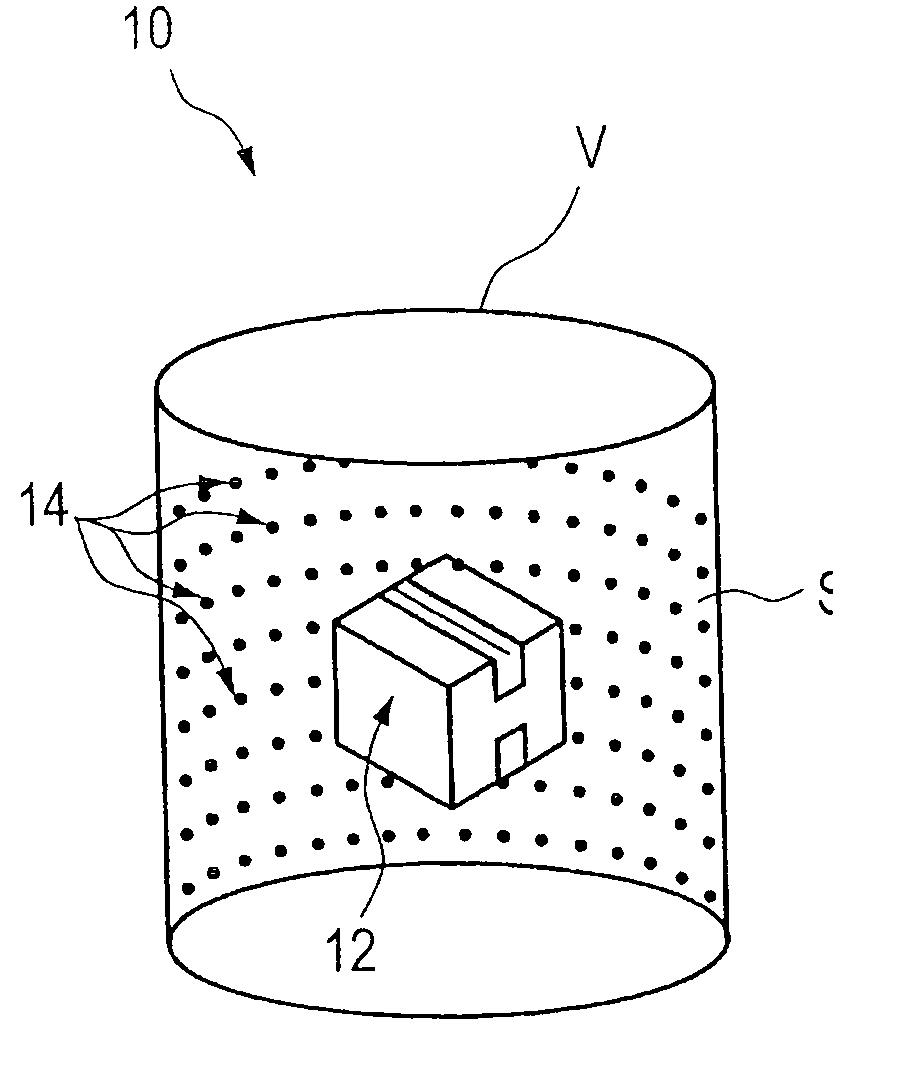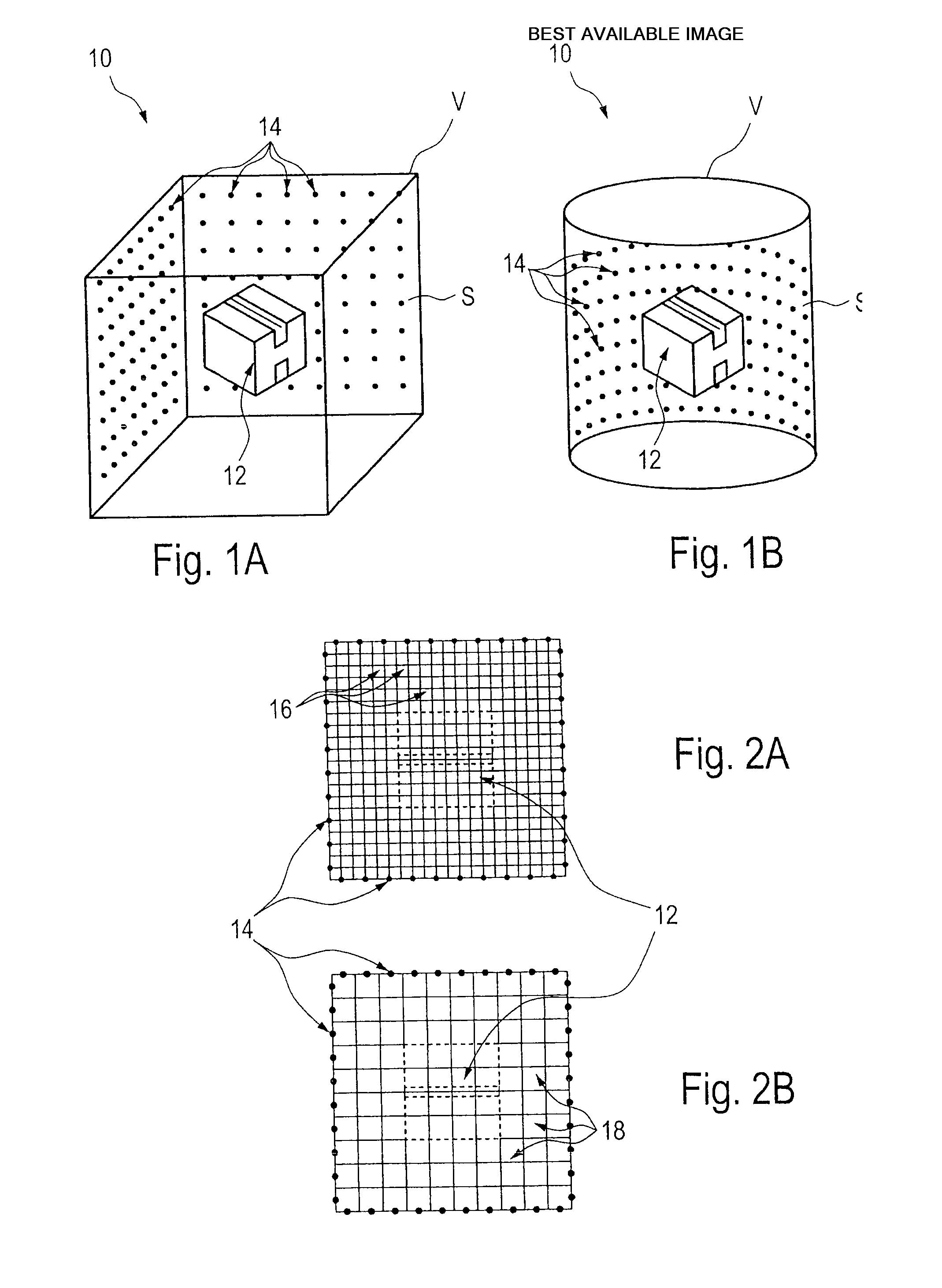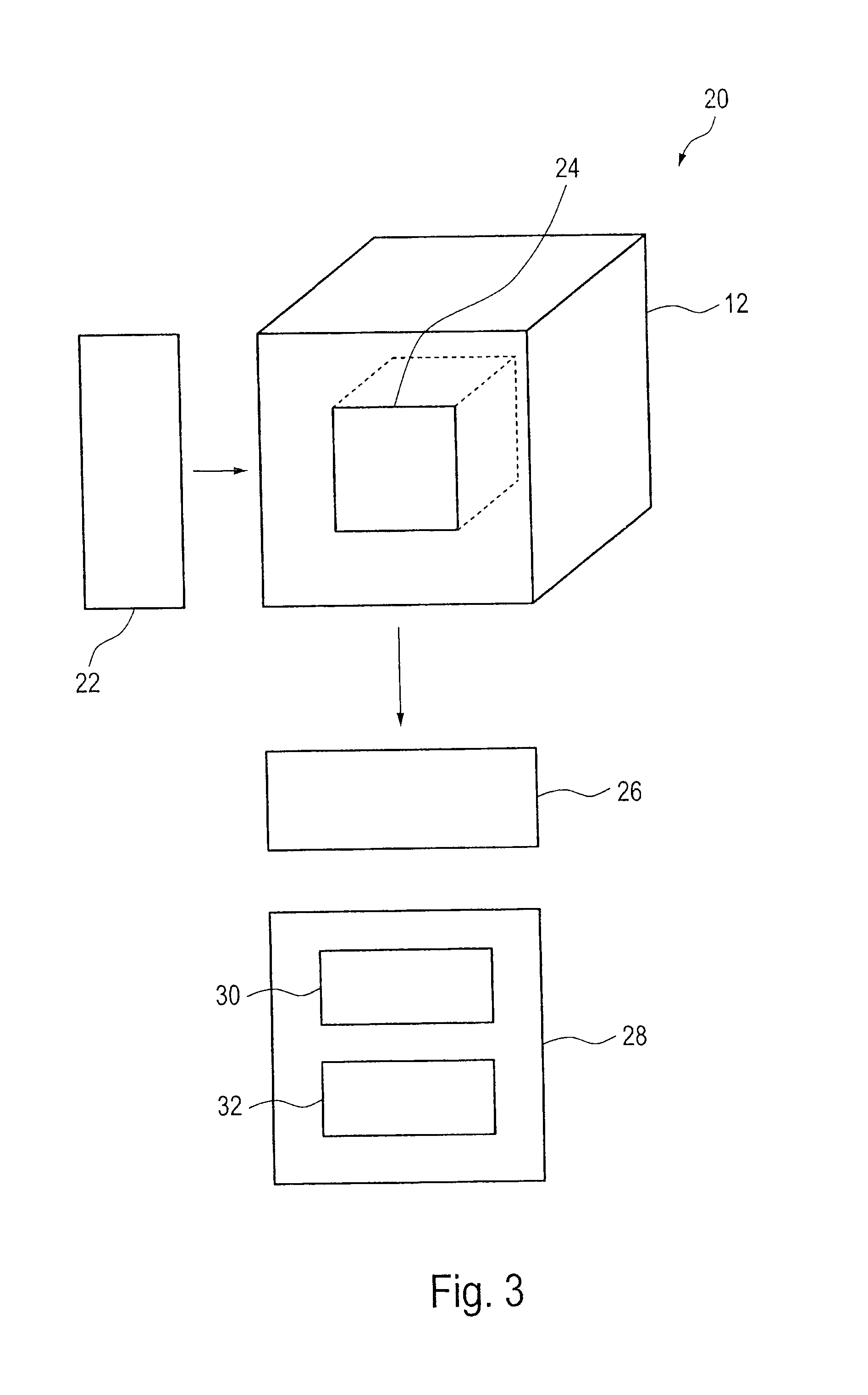Radar tomography apparatus and method
a tomography and camera technology, applied in the field of tomography cameras, can solve the problems of reducing the quality of obtained data, increasing the complexity of problems, increasing the number of transceivers used, etc., and achieving the effects of reducing the computational demand for evaluating and processing acquired data, accelerating data acquisition, and reducing the computational demand
- Summary
- Abstract
- Description
- Claims
- Application Information
AI Technical Summary
Benefits of technology
Problems solved by technology
Method used
Image
Examples
Embodiment Construction
[0036]Radar tomography is a well known technique to construct the material properties of objects. It can be applied in vast areas like biomedicine to study the properties of tissues and determine whether they are malignant or not. It has been applied for example to breast and lung cancer imaging. It has also been applied to detect clots in brains and to study the cardiac activities.
[0037]An embodiment showing the general layout of a radar tomography apparatus 10 is shown in FIG. 1. An object 12, e.g. a patient or a probe of tissue, is placed within a volume V that has the form of a cuboid (FIG. 1A) or a cylinder (FIG. 1B) for example (other formats are possible). On the surface S of this volume, an array of transceivers 14 is placed in a way to surround the object 12, wherein the transceivers can also be replaced by separate transmitters and receivers, which may be arranged at different positions and may be different in number.
[0038]The objective of radar tomography is to compute th...
PUM
 Login to View More
Login to View More Abstract
Description
Claims
Application Information
 Login to View More
Login to View More - R&D
- Intellectual Property
- Life Sciences
- Materials
- Tech Scout
- Unparalleled Data Quality
- Higher Quality Content
- 60% Fewer Hallucinations
Browse by: Latest US Patents, China's latest patents, Technical Efficacy Thesaurus, Application Domain, Technology Topic, Popular Technical Reports.
© 2025 PatSnap. All rights reserved.Legal|Privacy policy|Modern Slavery Act Transparency Statement|Sitemap|About US| Contact US: help@patsnap.com



